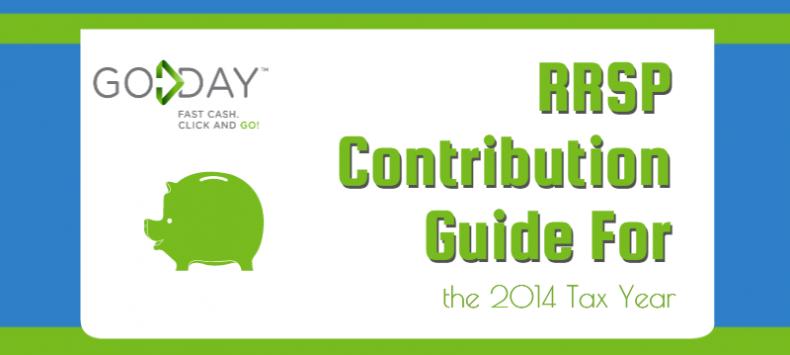Payday Loans Online | GoDay.ca
Tax time is busy for everyone, so here is a quick getting started guide to get you on your way to saving for your future via RRSP’s & TFSA’s. This week, we’ll cover the former, so check back next week when we review TFSA’s in detail.
What’s the difference between the two forms? An RRSP’s contribution limit is based on a percentage of your total annual income and those contributions are tax-deductible, however if you withdraw on your RRSP, those are subject to income tax like any other income. The additional benefit to contributing to RRSP’s is that any growth on that investment is also non-taxable.
A TFSA is a fixed amount regardless of your income (set at $5,500 a year for 2014) and those contributions are not tax deductible. Additionally, any growth on that investment, contrary to the nature of an RRSP, will be taxable. Another notable difference is that if you withdraw, you will not be taxed.
Essentially, a TFSA and an RRSP are different savings tools, and a TFSA is seen as supplemental to the RRSP. The latter is meant for long term benefit and the other for short term. A good savings portfolio would include both, but since that may not always be possible right away, consider your most pressing needs or financial goals to determine which to contribute to first.
- The maximum contribution limit is indexed for inflation for each subsequent year and is set at $24,270 for 2014.
- Are you getting a raise? It might make sense to consider delaying your RRSP contributions until that time as you’ll have a larger percentage allowable to contribute. Conversely, you should also consider the loss of time (and thus loss of growth opportunity) by contributing to your RRSP at that later date. Weigh this option carefully.
- You are allowed to “over contribute” to a lifetime total of $2,000 to your RRSP without incurring a penalty tax, however note that an over contribution is not deductible from your income in the current year, however they may be deducted in a subsequent year when your actual RRSP contribution is less than the maximum allowed.
- Note that a penalty tax of 1% per month applies to the amount of any over contribution in excess of $2,000 (or $8,000 where that limit applies). Contact your accountant to determine the steps you should take if you think you may be in an over contribution situation.
- Consider submitting tax returns for your children to create contribution space that can be used in the future.
- Additionally, consider cashing in an existing investment to contribute to your RRSP.
- If you’re taking out a loan to invest before your contribution time closes, note that the interest on that loan is not deductible.



